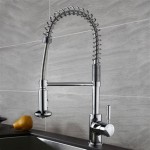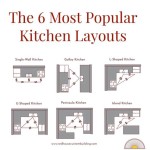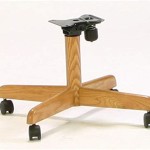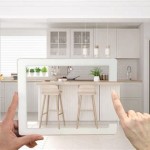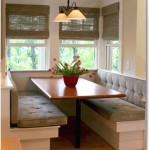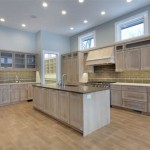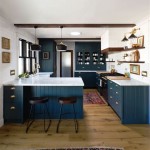Kitchen Color Theme Ideas: A Comprehensive Guide
The kitchen stands as a pivotal space within a home, often serving as a hub for culinary creativity, social gatherings, and familial interactions. The selection of a suitable color theme significantly impacts the ambiance and functionality of this essential area. Careful consideration of color palettes, incorporating factors such as natural light availability, kitchen size, and personal preferences, contributes to achieving a harmonious and aesthetically pleasing design.
This article will explore a variety of kitchen color theme ideas, encompassing classic choices, modern trends, and considerations for creating a personalized space. Effective color selection can enhance the perceived size of a kitchen, influence mood and energy levels, and ultimately improve the overall culinary experience.
Classic and Timeless Color Schemes
Certain color schemes possess enduring appeal, transcending fleeting trends to offer a sense of timeless elegance. These classic options often emphasize neutrality, versatility, and the ability to complement a wide range of architectural styles and decorative accents.
White on White: A predominantly white kitchen offers a sense of spaciousness and cleanliness. This scheme works exceptionally well in smaller kitchens, where it maximizes the reflection of natural light. The use of varying textures and subtle shades of white, such as off-white, cream, and ivory, prevents the space from feeling sterile. Accents of natural wood, metallic hardware, and colorful accessories introduce visual interest and prevent monotony.
Gray and White: This pairing provides a sophisticated and versatile foundation for kitchen design. Gray cabinets or walls create a calming backdrop, while white countertops and backsplashes contribute brightness and contrast. This combination allows for incorporating pops of color through appliances, cookware, or textiles. Varying shades of gray, from light dove gray to deep charcoal, offer options for achieving different levels of visual drama.
Wood Tones and Neutrals: Integrating natural wood tones, whether in cabinetry, flooring, or countertops, infuses warmth and organic beauty into the kitchen space. Pairing wood with neutral colors like beige, cream, or light gray creates a balanced and inviting atmosphere. Different wood species, such as oak, maple, and cherry, offer variations in color and grain, allowing for customization to suit specific preferences. Consider the undertones of the wood (warm or cool) when selecting complementary neutral colors.
Modern and Contemporary Color Palettes
Modern kitchen design often embraces bolder color choices and innovative combinations, reflecting a desire for personalization and individuality. These palettes prioritize clean lines, minimalist aesthetics, and the integration of technology.
Monochromatic Schemes: Employing a single color family with variations in tone and intensity creates a cohesive and visually striking effect. A monochromatic blue or green kitchen, for example, can evoke a sense of tranquility and sophistication. Introducing metallic accents, such as stainless steel or brass, adds contrast and elevates the overall look. Careful attention to texture and lighting is crucial to prevent the space from appearing flat or monotonous.
Bold Color Accents: A neutral kitchen provides an ideal canvas for incorporating vibrant color accents. A brightly colored island, backsplash, or set of cabinets can inject energy and personality into the space. Popular accent colors include teal, coral, yellow, and emerald green. These pops of color should be strategically placed to create focal points and avoid overwhelming the room. Consider the color wheel when selecting accent colors to ensure harmonious pairings (complementary or analogous colors).
Black and White Contrast: This dramatic pairing offers a timeless yet modern aesthetic. Black cabinets or countertops create a bold statement, while white elements maintain brightness and balance. The addition of metallic accents, such as gold or silver hardware, enhances the luxurious feel. This color scheme requires careful planning to ensure sufficient lighting and prevent the space from feeling too dark or closed-in.
Creating Personalized Kitchen Color Schemes
Beyond established trends, the ultimate goal is to create a kitchen that reflects individual tastes and preferences. This involves considering personal color affinities, lifestyle factors, and the existing architecture of the home.
Considering Natural Light: The amount of natural light a kitchen receives significantly impacts how colors appear. In kitchens with abundant natural light, darker colors can be used without making the space feel cramped. Conversely, in kitchens with limited natural light, lighter and brighter colors are essential for maximizing illumination and creating an open feel. Sample paint colors under different lighting conditions before making a final decision.
Reflecting Personal Style: The kitchen's color scheme should align with an individual's overall design aesthetic. Whether it's a rustic farmhouse style, a minimalist modern design, or a bohemian eclectic vibe, the colors should complement and enhance the desired mood. Consider personal collections, favorite artwork, and existing furniture when selecting a color palette.
Incorporating Textural Elements: The use of diverse textures can add depth and visual interest to any kitchen color scheme. Natural materials such as wood, stone, and brick introduce warmth and character. Glossy surfaces reflect light and create a sleek, modern feel, while matte finishes offer a more subdued and sophisticated look. Experiment with different textures in countertops, backsplashes, and cabinetry.
The Psychology of Color: Each color evokes specific emotions and associations. Understanding these psychological effects can inform the selection of a kitchen color scheme. For example, blue is often associated with calmness and tranquility, while red is linked to energy and excitement. Green represents nature and freshness, while yellow evokes feelings of happiness and optimism. Consider the desired mood and atmosphere when choosing colors for the kitchen.
Using Color Planning Tools: Numerous online tools and software programs, including digital mood boards and color scheme generators, exist to assist in visualizing different color combinations. These resources allow users to experiment with various palettes, explore potential outcomes, and make informed decisions before committing to a final design. Utilizing such tools can save time and resources by preventing costly mistakes.
Consulting with Professionals: Interior designers and color consultants possess expertise in creating harmonious and functional kitchen spaces. Seeking professional guidance can prove beneficial, particularly when dealing with complex design challenges or uncertain color preferences. Professionals can provide personalized recommendations, offer valuable insights, and ensure that the chosen color scheme aligns with the client's vision and lifestyle.
The Importance of Hardware and Accents: While the primary color scheme establishes the foundational aesthetic, hardware, lighting fixtures, and decorative accents play a crucial role in completing the overall design. Selecting hardware finishes that complement the chosen colors can enhance the cohesive look. For instance, brass hardware pairs well with warm-toned wood and neutral cabinets, while stainless steel complements cool-toned colors and modern designs. Lighting fixtures should provide adequate illumination while also contributing to the style and ambiance of the kitchen. Accessories, such as artwork, plants, and textiles, add personal touches and create a welcoming atmosphere.
Balancing Color and Functionality: In addition to aesthetics, the functionality of the kitchen should be considered when selecting a color scheme. Lighter colors tend to show dirt and grime more readily than darker colors, making them less practical for high-traffic areas. Durable and easy-to-clean materials are essential for maintaining a pristine appearance, especially in areas prone to spills and splatters. Consider the practical implications of each color choice and select materials that are both aesthetically pleasing and functional.
The Impact of Flooring: The kitchen flooring significantly influences the overall color scheme. Whether choosing hardwood, tile, laminate, or vinyl, the flooring color should complement the cabinets, countertops, and walls. A neutral flooring option, such as light gray or beige, provides a versatile backdrop that allows for flexibility in other design elements. Consider the maintenance requirements of different flooring materials when making a selection. Durability, water resistance, and ease of cleaning are important factors to consider.
Countertop Considerations: Countertops are a prominent feature in any kitchen and should be carefully considered when planning the color scheme. Granite, quartz, marble, and butcher block offer a range of colors, patterns, and textures. Light-colored countertops, such as white or cream, can brighten up a dark kitchen and create a sense of spaciousness. Dark-colored countertops, such as black or charcoal gray, add drama and sophistication. Consider the durability and maintenance requirements of different countertop materials when making a selection. Heat resistance, scratch resistance, and stain resistance are important factors to consider.

Hips Hearstapps Com Hmg Prod Images Ibp Kitchen Jo

I Pinimg Com 736x Af 13 0e Af130ef1a73666ac38bb9e7

Popular 7 Kitchen Colour Trends In 2024 Designcafe

Media Designcafe Com Wp Content Uploads 2024 02 09

46 Best Kitchen Paint Color Ideas And Combinations For 2024

55 Best Kitchen Color Ideas 2024 According To Interior Designers
Images Squarespace Cdn Com Content V1 55bebb51e4b0

Hips Hearstapps Com Hmg Prod Images Mississippi Fa

What The Trending Kitchen Color Schemes For 2024 Say About Year Ahead Kauffman Kitchens

Thumbor Forbes Com Fit In 900x510 Https
Related Posts

